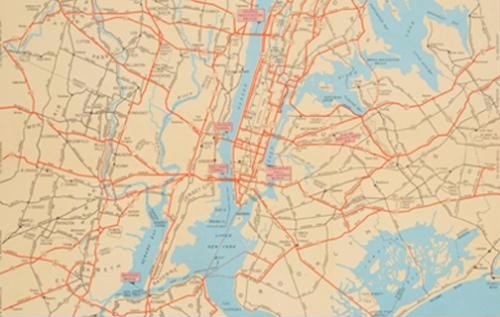FROM PORT TO PEOPLE: REINVENTING URBAN WATERFRONTS
Friday, April 25, 2014
Teatro, The Italian Academy, 1161 Amsterdam Avenue
For centuries, ports and harbors have played a seminal role in the development of commerce and cities. They evolved as a means of defense and of transportation—for both goods and people. Waterfronts were intense zones of use, dominated by piers, warehouses, markets and manufacturing workshops. Industrialization and increases in trade only reinforced the significance of water access, and harbors became an even more important asset of cities.
Over the course of the last half century, however, changes in shipping and trade have fundamentally reshaped the physical relationship between port areas and the cities that grew up around them. Advances in land transportation, new technologies for cargo handling, and the physical space required by containerization made many inner-city port facilities obsolete, drastically reducing the number of people whose livelihoods are made along the shore.
These changes have been felt by cities around the world, some as early as the 1960s and 1970s and some only more recently. Yet despite the disparity in time, the challenge has been the same: how to reclaim the waterfront for development, recreation or culture in a way that synthetically reconnects it to the city and the people it serves. Doing so is not a simple matter of physical planning; it often involves overcoming the combined challenges of contaminated lands, reluctant neighboring communities and environmental regulation that together circumscribe what can be built (or rebuilt) in or along the water.
The reactivation of redundant “working waterfront” lands occurred first in industrially advanced countries in Europe and the US. Containerization left central city dockyards and piers silent, and the second half of the twentieth century saw ambitious—and not always successful—efforts to repurpose them. Today, similar changes are taking place in rapidly industrializing and growing cities in Eastern Europe, Asia, and South America. The different stages and nature of such transformation processes will be the subject of the one-day symposium From Port to People: Reinventing Urban Waterfronts, which will consider the experience of waterfront redevelopment in four cities: New York, Rio de Janeiro, Istanbul, and Mumbai.
As early as the 1970s, New York spearheaded waterfront redevelopment, revitalizing parts of lower Manhattan through development projects such as Battery Park City and the South Street Seaport. Since then, other parts of New York’s formerly working waterfront have been rezoned from non-residential uses to mixed-use, and redevelopment is taking place at a fast pace. Rio de Janeiro, spurred in part by the World Cup in 2014 and the Olympics in 2016, is moving ahead with a wildly ambitious plan to redevelop a major segment of its urban port zone—including the construction of underground roadways, new rail lines and significant new commercial development. Istanbul is likewise moving forward on significant waterfront projects, including the recent privatization of one of its former commercial ports as part of an effort to create a new district for tourism. In contrast, Mumbai’s working waterfront has long been overlooked as part of the city’s development plans—though the opening of a new highway along the eastern side of the city has focused attention on the potential of the city’s eastern waterfront.
The symposium will consider these realized, ongoing, and planned waterfront revitalization projects, investigating the challenges and opportunities that waterfront development presents for planners, developers and cities. Focusing on governance, finance, transportation planning, and urban design, panelists will explore what these waterfront cities can learn from each other in an effort to identify solutions and ideas that can help ease the exciting transition along the waterfront “from port to people.”

















